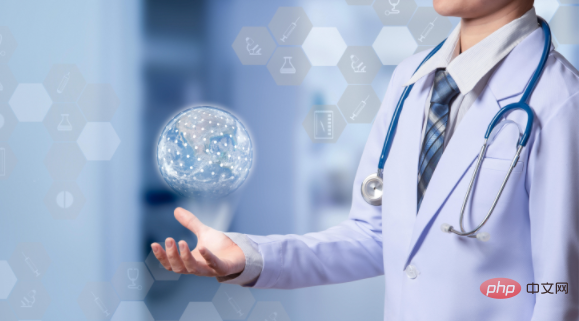Home >Technology peripherals >AI >How speech recognition is redefining patient care?
How speech recognition is redefining patient care?
- 王林forward
- 2023-04-12 08:07:021068browse

Speech recognition solutions can solve the administrative burden of clinical documentation and help provide better informed patient care
Nearly every industry, from banking to agriculture The impact of AI is being felt, but healthcare is an area in which we all have a stake. Modern technology is already transforming healthcare delivery, making patient care more productive and efficient, but a new generation of conversational and artificial intelligence solutions are taking this transformation to the next level, redefining the future of healthcare as we know it, And takes us all—physicians and patients—into a new chapter.
It all starts with sound
Over the past decade, speech recognition solutions have advanced so rapidly that clinicians are turning to technology to help them address the ever-increasing burden of clinical document management, exacerbating to address the growing problem of clinician burnout. Research released by Nuance earlier this year showed that the average clinician spends 13.5 hours per week on clinical documentation, an increase of more than 25% from seven years ago. To make matters worse, 3.2 hours per week are devoted to clinical documentation outside of working hours, with medical professionals having to give up personal time.
Modern technologies such as speech recognition can help relieve some of the administrative pressure on clinicians, allowing them to work more efficiently and smarter. These technologies are designed to recognize speech passages and convert them directly into detailed clinical notes in electronic patient records, no matter how quickly they are delivered. They can also improve the accuracy and quality of patient records by reducing duplication and supporting standardization across departments.
With so many increasingly complex clinical documents to read, the ability to create detailed, accurate documentation using only their voice saves clinicians hours on the job. These hours can quickly add up to weeks or even months, helping them see more patients and achieve a better work/life balance.
Improve documentation practices and reduce burnout
We live in the golden age of speech recognition, and many healthcare organizations are already leveraging speech recognition to improve documentation practices and reduce burnout. For example, Frimley Health NHS Foundation Trust is undergoing a digital transformation with the ultimate goal of delivering excellent patient care. It started with more than 200 legacy systems, relying on transcription services and handwritten reports to create documents and correspondence. Today, it is replacing them with a single system based on Epic EPR.
With Nuance’s Dragon Medical One solution, hospital healthcare professionals can use their smartphones along with the Power Mic Mobile app as a dictation tool, create clinical documentation and navigate EPRs. By listening in on relevant patient and clinician conversations, it automatically captures all the necessary information so doctors don't have to. This allows doctors to step away from the computer screen and focus entirely on the patient speaking, improving the quality of patient care and documentation.
Voice Diagnosis
The most exciting thing is that this is just the beginning. Speech is a more complex system than we initially realize. When we speak, we use our lungs, vocal cords, tongue, lips, nasal cavity, and brain. In fact, there are over 2,500 biomarkers in sub-languages of human language, all of which provide diagnostic clues that can provide insight into various aspects of our health and well-being.
Data scientists, researchers and artificial intelligence developers are studying how sensory and signal data from patient voice samples can be used to detect key warning signs of disease, injury or mental health issues. It can even help identify social determinants of health (SDoH) – the more subtle factors that influence an individual’s health and wellness. This includes factors such as socioeconomic status, employment, food security, education and community cohesion, which can have a profound impact on health care outcomes.
Monitoring patient health for future practice
If future speech recognition technologies can capture insights from SDoH in conversations, they may help mitigate its impact on patient populations. If there was greater awareness of SDoH, clinicians and other stakeholders might be able to make more informed decisions about patient treatment and provide better support. If healthcare organizations could identify SDoH and incorporate it into patient care plans to treat the whole person, not just one disease, patient outcomes could be greatly improved.
There is also an exciting opportunity to use these technologies to monitor patient health and provide treatment at home. For example, gait analysis using a combination of wearables, cameras, depth sensors, radar and acoustic sensors could detect Parkinson's disease years before we see signs of it now.
As you can see from a few examples here, modern technology is transforming healthcare today, and its possibilities for reimagining the future of the industry are both exciting and broad. Not only that, but by transforming the care experience for clinicians and patients, it can help both groups live happier, healthier lives.
The above is the detailed content of How speech recognition is redefining patient care?. For more information, please follow other related articles on the PHP Chinese website!
Related articles
See more- Technology trends to watch in 2023
- How Artificial Intelligence is Bringing New Everyday Work to Data Center Teams
- Can artificial intelligence or automation solve the problem of low energy efficiency in buildings?
- OpenAI co-founder interviewed by Huang Renxun: GPT-4's reasoning capabilities have not yet reached expectations
- Microsoft's Bing surpasses Google in search traffic thanks to OpenAI technology

